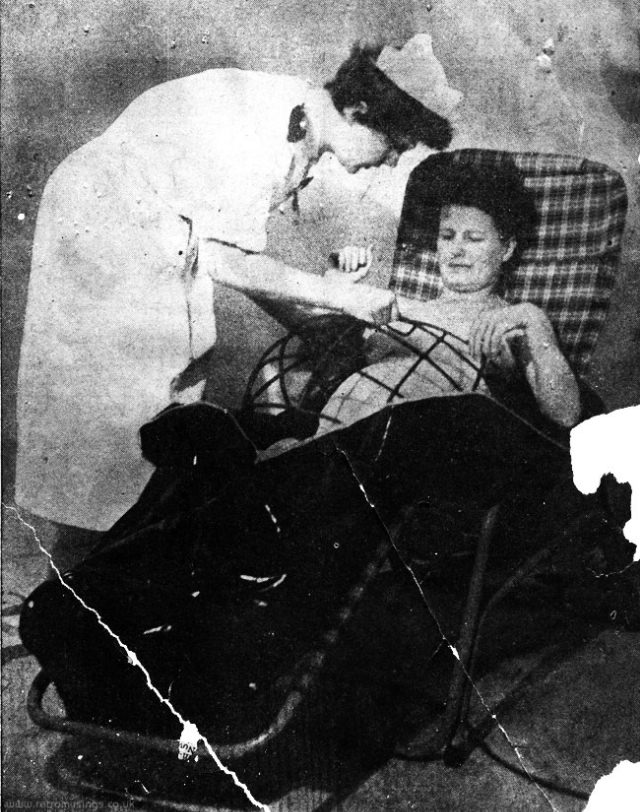The year was 1959. Amidst the many breakthroughs of the decade, an intriguing innovation was introduced in the field of obstetrics: a ‘Space Suit’ for expectant mothers. Coined as “The Baby Machine,” this unique contraption promised to ease and quicken the process of childbirth, an idea that sparked worldwide attention.
Conceived in Johannesburg, South Africa, by Professor Stephanus Heyns, the Baby Machine was a combination of a transparent plastic suit, a vacuum pump, and a clinical chaise-longue. This setup was designed to help the expectant mother during the challenging first stage of labour, which often entails the most prolonged and strenuous part of childbirth.
Mrs. Lesley Spencer was one of the first mothers to test the machine, as her husband documented the momentous occasion through photographs. Mrs. Spencer’s successful experience with the Baby Machine marked a potential milestone in obstetrics, with King’s College Hospital in London showing interest in this revolutionary device.
But how exactly did this ‘space suit’ for expectant mothers work? The Baby Machine was essentially an airtight suit with a rigid metal cage inside to create an air space between the mother’s body and the plastic. As the vacuum pump evacuated air from the suit, the sudden drop in pressure allowed the mother’s muscles to work more freely and with greater power.
The beauty of the design lay in its simplicity and user control. The expectant mother could initiate the suit’s function with the touch of a finger, activating the machine whenever she needed its assistance. According to Professor Heyns, this feature significantly reduced the time of the birthing process.
The suit’s transparency allowed medical professionals to monitor the progression of labour closely. If the need arose, the suit could be quickly removed via a zip-fastener, ensuring the mother’s safety. Professor Heyns claimed that over 1,100 women had successfully used the suit at a large maternity hospital in Johannesburg, providing a promising start to this invention’s journey.
Despite its potential, the Baby Machine did not become standard equipment worldwide as initially envisioned. Nevertheless, it symbolised the creative lengths innovators were willing to explore to ease and enhance the childbirth process. The Baby Machine of 1959, though not widely adopted, played a noteworthy role in the evolution of childbirth assistance, contributing to the relentless quest for safer and more comfortable delivery methods for mothers worldwide.






